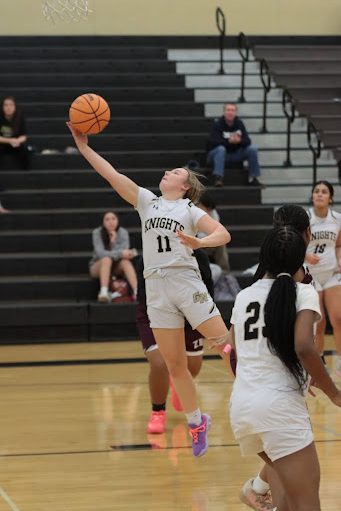Schools combat common issues with remote learning
Over the summer, schools faced a difficult problem: how were they going to continue educating students without risking public health? Grayslake North decided to refine the remote learning that was used at the end of the last school year, thus keeping students, staff, and faculty safe in their own homes until it was safe to return to in-person learning.
“We make all of our decisions as an administrative team, with the district and the two building administration sets, and we look at a lot of things. We look at the CDC and the guidelines coming out. We’re looking at some of our students with special needs that may need to also get into the building to be able to work with staff members. And then, of course, we’re looking at those classes like CTE and Fine Arts and what we can do to get them back in the building as well. We’re checking the positivity rates and CDC guidelines every day because the last thing we want to happen is that we start to bring kids back in the building and then have to shut down because something terrible happens. We want to keep not just our students and their families safe, but we want to keep our staff safe as well,” said Dr. Jessica Iovinelli, the director of technology for the district.
Dr. Iovinelli and the rest of the administrative team are trying to bring freshmen into the schools in order to introduce them to the new school setting, but the hands-on classes like ceramics, woodworking, and anatomy are the school’s main priority, as their classes are very difficult to do remotely.
“The art department made kits for each of their students with things that they can use to create the art, and culinary did something very similar. I know they were trying to work on ways for them to do some of the cooking at home, which is kind of difficult because not everybody has the same stuff. I teach Human Anatomy and Physiology, and unfortunately, I can’t send a kit for dissection to kids. I don’t know how many parents would appreciate it. But we’re trying to find other ways where kids can still have some hands-on experience. A lot of those classes are tactile and working with your hands, especially science labs. We’re trying to figure out how to get some lab skills involved with virtual labs so that kids can have those opportunities, even though it is going to be a little different,” said Nathania Busse, a technology instructional coach and science teacher.
While science classes are working on developing a way to do labs virtually, many teachers were left with another problem: how can they ensure students are not cheating on tests they take at home? What can they do to reduce cheating when most students have other devices such as phones or home computers?
“My argument always is: it doesn’t do us any good to spend a ton of time figuring out how to lock down your screens, or lock down your browsers, because you guys are smart,” Iovinelli said. “So what it involves is thinking about tests differently, thinking about instead of just multiple choice, we try tests with short answers or some sort of really cool project based learning that shows that you learned everything the teacher was trying to teach, but you’re presenting it in your own way. It’s about giving you as the student the freedom to show how you learned what your teacher wanted you to learn. And that’s hard, because we don’t do that all the time, especially in a class like math, where there are just certain things you need to know.”
This change in how tests are given is just one of the issues that the administrators and teachers have to solve. They also have to work on how to help students with less reliable internet connections, students who might have difficulties hearing and processing audio, and students who have other problems with the new learning environment.
“A lot of times we will get a HelpDesk ticket that says they’re having connectivity issues in the home. Most of the time it’s because the device needs to be reset, and our tech department has a couple of steps that they will have students go through with their Chromebooks to re-authenticate them and make sure that the problem is not the actual device itself,” Iovinelli said. “What typically happens if it ends up being more than that is a counselor, a dean, or a parent reaches out to me. I call each family individually and troubleshoot with them because sometimes it’s not necessarily connectivity. It might be that the router is in the basement and the students are on the third floor trying to do remote learning, and it’s just too far of a distance from the router itself. Sometimes companies like Xfinity and Comcast have Wi-Fi extenders where you just plug them into outlets, and then it gives you better Wi-Fi for each floor, which is sometimes what’s necessary. Some people just have absolutely no internet access at home, and those are the kids that we’re really trying to prioritize so that they can do school. When I talk to the families, if it is one of those situations where there is no internet at home, we do have a limited number of hotspots that we are providing as a district, so I’m able to connect families with hotspots that they’re able to use. We also have opened up our guest network, so anyone who’s in the vicinity of our school can hop on to our Wi-Fi with no problem without any sort of email or password.”
“We contact students one on one if they’re struggling and work together to find out what the reasons might be. It could be a lack of motivation, and nobody’s going to really blame them for that. It’s hard to be motivated if you’re at home on your computer and there’s a million things going on, or it could just be a lack of ability or understanding of the instructions. I think we can also be really mindful about the workload that we do give out and try to give students time to work together while they’re on Zoom, or time for students to work during class time to get started,” Busse said.





